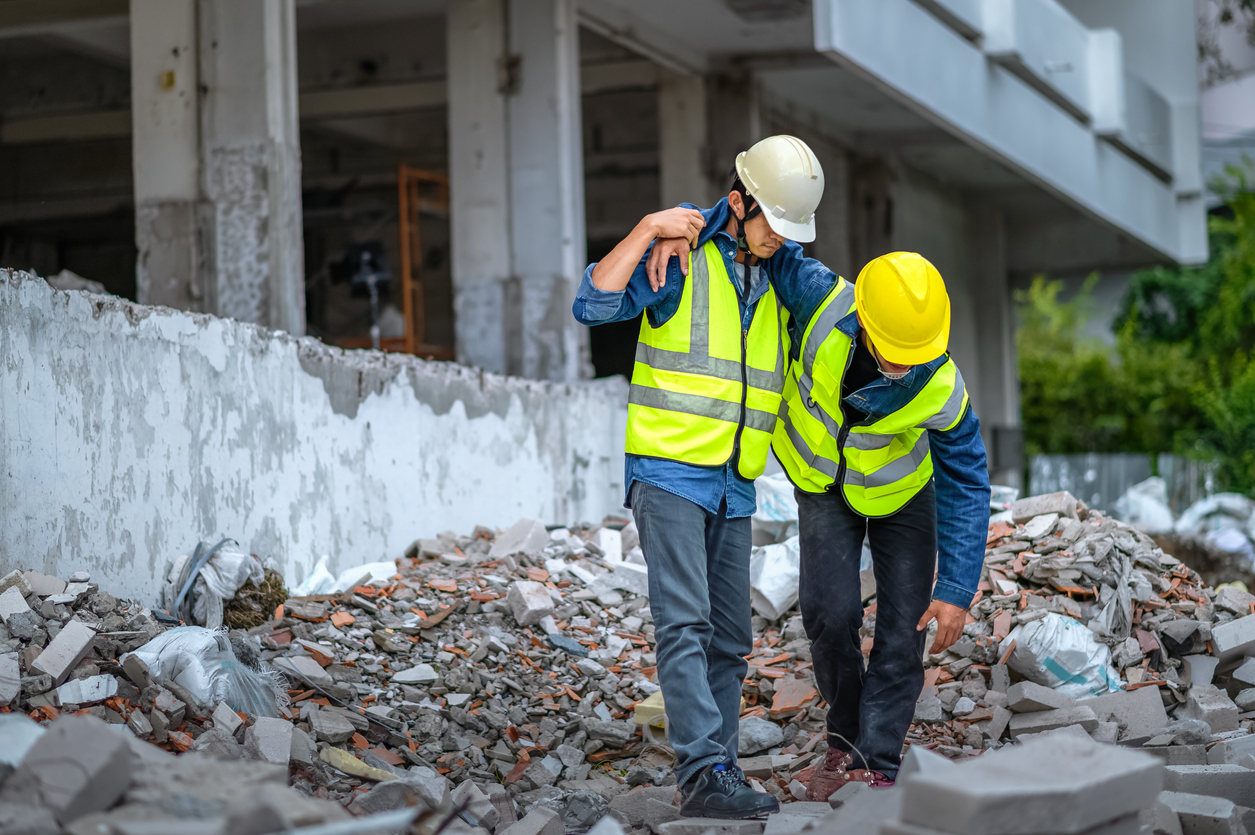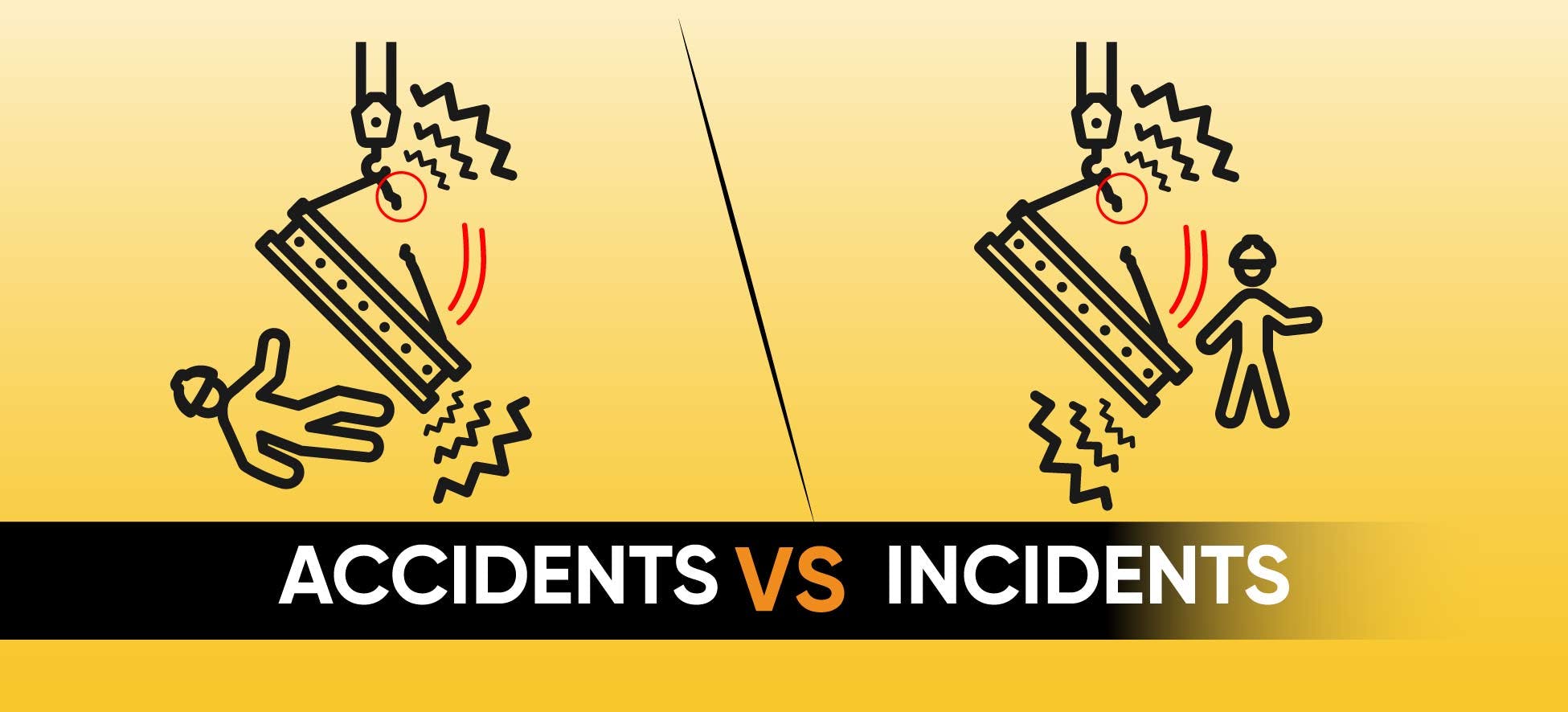With 4 percent share in the US GDP, the construction sector is a lifeline of the American economy. However, this industry continues to be plagued with safety issues that endanger health and wellbeing of its workers.
Despite advancements in safety gear, technology, and training, construction workers still endure high rates of fatal and nonfatal incidents and accidents. To understand safety standards that can protect construction workers, it is important to differentiate between incidents and accidents and how to deal with each event effectively.

Incidents vs. Accidents
As per OSHA, an incident can be described as an unanticipated event that does not cause significant losses. It can be an event that results in unfavorable outcomes such as mild illness or injury, property damage, or a “near miss” with a profound health effect, or a decrease in production.
Meanwhile, an accident is described as an unexpected event that causes damage, injury, or harm. Accidents can also be described as unintentional, unpreventable, unforeseen, consistently unfavorable, as severe as a devastating vehicle accident, or as simple as shattering an inexpensive item.
While OSHA categorizes two events separately, it prefers to use the term “incident” when it comes to teaching its workers about workplace hazards and safety standards. This is because the incident is a neutral term that brings a certain balance to the emotional and rational approach while dealing with an adverse event.
When is an Incidents Termed as an Accident?
As per OSHA’s recording and reporting policies manual, an incident can be described as an accident. OSHA imposes a 24-hour reporting deadline for organizations’ most stringent safety and health consequences. These reports immediately result in a site inspection and inquiry, which businesses definitely wish to avoid at all costs.
Reportable events consist of:
- Death
- Hospitalization as a patient
- Amputation or loss of limbs
- Loss of vision.
Furthermore, OSHA mandates that specific outcomes be included in a log that will be examined during an inspection, investigation, or audit. Incidents that can be recorded include:
- Any occurrence requiring reporting illnesses or injuries that necessitate days off from work, restrictions on employment, or switching to a different profession.
- Medical care beyond first aid
- Loss of consciousness
- Another severe injury or sickness diagnosis is made by a trained health care expert.
Organizations are only required to publish their annual total count; they are not required to provide incident specifics to a centralized database. Regarding occupational safety, this is frequently the bare minimum for accident definition. Local authorities or groups themselves may choose even more conservative reports.
The Difference Between an Accident and an Incident
Safety mishaps can have significant repercussions, and for example, they can be super-costly, workers’ compensation, medical bills, lost wages due to time off work, lower productivity, low staff morale, legal fees, environmental cleanup costs, and damage to your reputation.
Incidents can be a valuable strategy for averting accidents because they are less expensive than accidents. As long as you pay attention, incidents can help you identify security threats and stop accidents from happening again.
Investigations into incidents and tracking become helpful in this situation. Your efforts should focus on identifying the unblamed reasons for each incident’s core causes. Concluding that someone was irresponsible or that employers failed to follow safety protocols is not helpful.
Investigating an Incident at a Construction Site
It is extremely crucial to differentiate between an incident and an accident. Employers and employees can seize the opportunity to identify loopholes in their processes and faults in their safety and health systems by looking into a worksite occurrence, such as a fatality, injury, illness, or close call. Most significantly, it makes it possible for both employers and employees to recognize and carry out the necessary remedial measures to stop the recurrence of accidents.
Incident investigations solely focused on identifying and fixing the incident's root cause rather than playing the blame game. A supervisor often conducts incident investigations but should also include managers and employees working together since each brings different analysis, perspective, and knowledge to the investigation.
While conducting an investigation at a worksite, the team must investigate the root cause instead of the immediate causes of an incident. It is very easy and often misleading to conclude failure to follow a protocol solely was the cause of an incident. When a loophole is identified, it is essential to ask why it existed and why it was not previously addressed.
For example:
- If a safety protocol or rule was not followed, then why was the protocol or rule not followed?
- Was the production putting too much pressure? If yes, then why was the production team permitted to put such pressures which would compromise safety?
- Was the procedure outdated or safety training incomplete? If so, why was the problem not previously identified, or, if it was identified, why had it not been dealt with?
Conclusion
OSHA was founded to introduce adequate safety drills and measures to minimize the probability of injuries and fatalities. However, in case of any mishap, it is necessary to vigilantly investigate it and then label it as an accident or an incident. After narrowing it down to an accident or incident, look for the possible root cause of the event to deal with it effectively rather than accusing the inadequate adherence to protocol.
After identifying the causative agent, an effective solution should be derived immediately, and employers should ensure strict compliance. Enhanced OSHA training programs and timely investigations can effectively prevent unfortunate events at the construction site and save employers a fortune.


